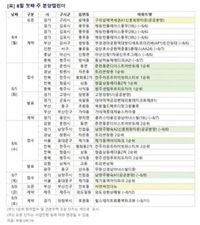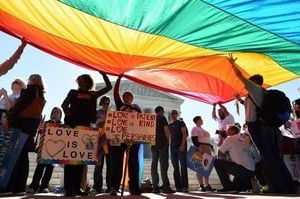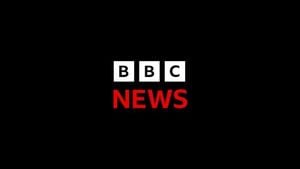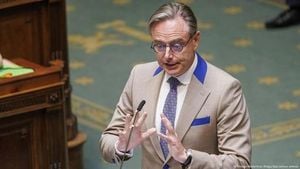As August 2025 kicks off, South Korea's real estate market is buzzing with activity, promising a substantial influx of new apartments across the nation. According to Real Estate R114’s August 3 report, the month will see nearly 29,000 apartment units supplied nationwide, a figure that not only matches July’s output but also significantly surpasses last year’s August supply by more than 10,000 units. This surge highlights a vigorous push in housing availability, particularly in the Seoul metropolitan area, which accounts for over 17,000 units.
Focusing on the first week of August (August 4-10), prospective homebuyers can expect around 5,383 new apartments to hit the market from eight different complexes nationwide, with 3,683 units available for general subscription. This week’s spotlight includes the eagerly awaited first general sales in the 3rd new towns, especially in the Namyangju Wangsuk district, which has drawn considerable attention from buyers and investors alike.
One of the key developments is the 'Jegi-dong Station I-PARK' located in Dongdaemun-gu, Seoul. This complex, developed by HDC Hyundai Development, will open its first-round subscription applications on August 6. The project features two buildings rising from three underground floors up to 32 floors above ground, comprising a total of 351 households. Of these, 82 units ranging from 44 to 59 square meters are earmarked for general subscription. The complex’s strategic location near Jegi-dong Station on Seoul Subway Line 1 and proximity to major commercial hubs like Homeplus, Lotte Mart, Lotte Department Store, and E-Mart, as well as traditional markets such as Yaknyeong Market and Gyeongdong Market, make it an attractive option for city dwellers seeking convenience and accessibility.
Meanwhile, the Namyangju Wangsuk district, the largest among the 3rd new towns, is launching its first general subscription, marking a significant milestone since the government’s announcement under Lee Jae-myung’s administration. The A1 block in Jinjeop-eup, Namyangju, Gyeonggi Province, will provide 629 units of 59 square meters across eight buildings, ranging from two underground floors to 25 floors above ground. Adjacent to this is the A2 block, designated as a newlyweds’ hope town, offering 401 units of 46 and 55 square meters in seven buildings, with heights from two underground floors to 28 floors above ground. This blend of public subscription and specialized housing aims to cater to a diverse demographic, especially young families and first-time buyers.
Adding to the excitement, model homes for the 'Guri Galmae Station Seokyeong A1 Shinheung Huimang Town' in Galmae-dong, Guri, Gyeonggi, and 'Seomyeon Summit The New' in Jeonpo-dong, Busanjin-gu, Busan, are set to open. The Guri project, managed by the Korea Land and Housing Corporation (LH), encompasses 1,182 households, with 461 units available for general subscription after excluding pre-subscription allocations. This complex is designed with newlywed couples in mind, featuring amenities such as daycare centers, indoor playgrounds, and community spaces to foster a family-friendly environment.
Zooming out to the entire month, the nationwide supply totals 28,765 apartment units spread across 37 complexes, including rental units. This volume mirrors July’s output but represents a significant increase compared to August 2024’s 16,974 units and the monthly average of 13,983 units up to July 2025. The Seoul metropolitan area dominates the supply with 17,229 units, primarily concentrated in Gyeonggi Province (14,884 units), followed by Incheon (1,994 units), and Seoul itself (351 units). Noteworthy large-scale complexes in the metropolitan region include 'Cheolsan Station Xi' in Gwangmyeong with 2,045 units, 'Anyang Xi Herition' in Anyang with 1,716 units, and the 'Ganghwa 2 District Housing Cooperative' in Incheon with 1,325 units.
However, the supply landscape in local provinces is more cautious. With 11,536 units planned outside the metropolitan area, construction companies are selectively timing their projects due to lingering unsold inventory and sluggish demand recovery in certain regions. Busan leads local supply with 3,277 units, followed by Chungbuk (2,351 units), Gangwon (1,714 units), and Gyeongnam (1,428 units). Major local complexes include 'Cheongju Centerpurugio Jai' in Sajik-dong, Seowon-gu, Cheongju, offering 2,271 units; 'Ecodeltacity Purugio The Park' in Gangdong-dong, Gangseo-gu, Busan, with 1,370 units; 'Wonju Station U-Mi Lyn The Stella' in Musil-dong, Wonju, Gangwon, featuring 927 units; and 'Gimhae Shinmun 1 District Common Housing 2nd Phase' in Shinmun-dong, Gimhae, Gyeongnam, supplying 695 units.
Real Estate R114 notes that while some core metropolitan areas subject to the subscription cap system continue to attract strong interest, August’s housing market faces potential challenges. The overlap of the summer vacation season and the traditional off-season for real estate transactions could dilute the concentration of demand, leading some developers to adjust their subscription schedules accordingly. This strategic timing aims to optimize sales outcomes amid fluctuating buyer engagement.
Despite these seasonal hurdles, the first week of August’s offerings signal a robust start to the month, with high-profile projects like Jegi-dong Station I-PARK and Namyangju Wangsuk’s initial general subscriptions setting the tone. The blend of urban redevelopment, new town expansion, and specialized housing projects reflects a multifaceted approach to addressing South Korea’s housing needs, balancing quantity with tailored amenities for diverse residents.
For buyers, the August market presents a rare opportunity to access a wide range of options, from centrally located city apartments near vibrant transit and commercial hubs to thoughtfully designed new towns catering to families and newlyweds. As the market unfolds, the interplay between supply volume, location advantages, and timing strategies will be critical in shaping the housing landscape heading into the latter half of 2025.




